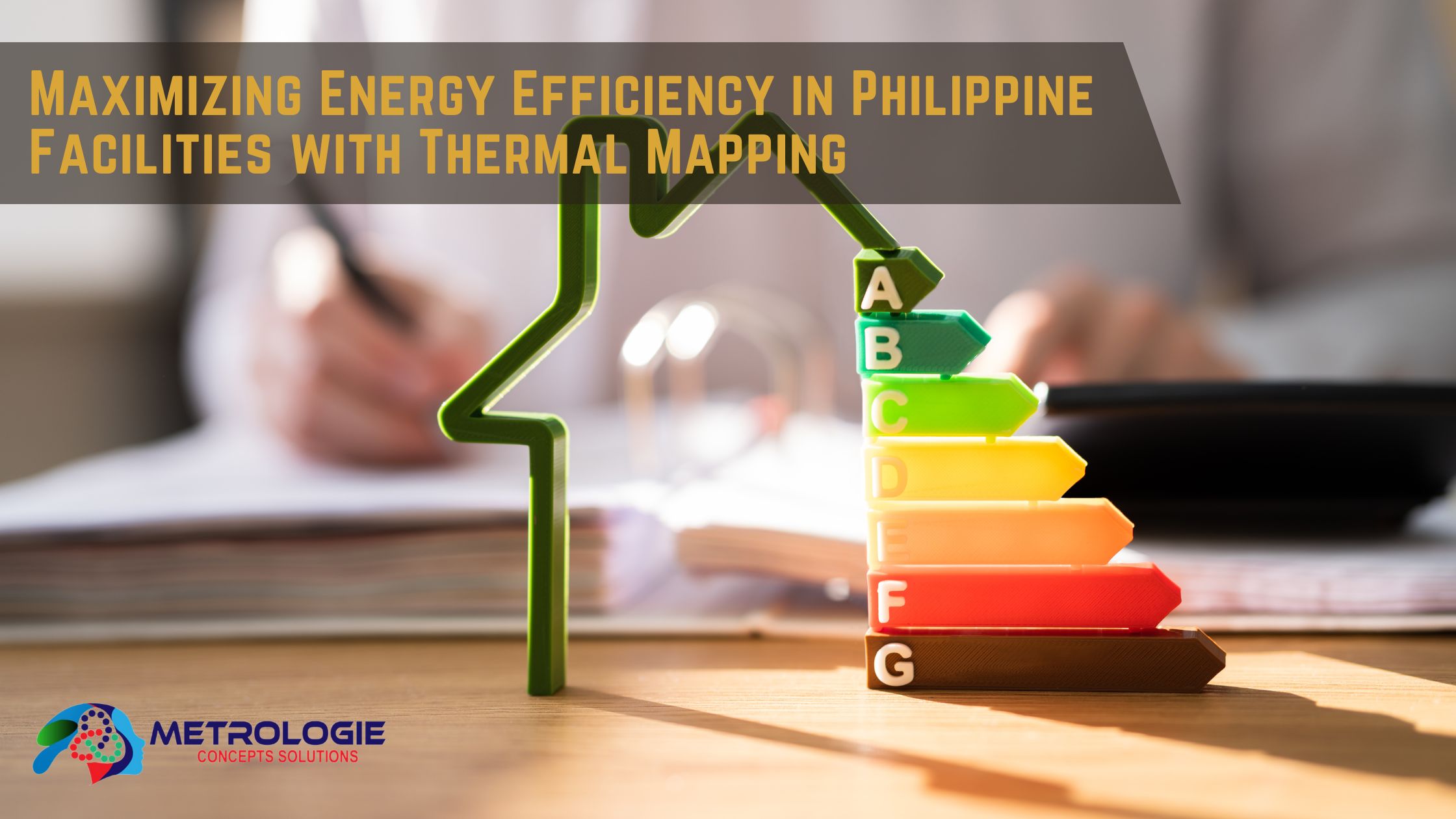Discover the sustainable approach of maximizing energy efficiency in Philippine facilities with thermal mapping. Learn how this innovative method can revolutionize energy consumption patterns while optimizing performance and reducing costs.
Energy efficiency has become a crucial focus in today’s world, especially in countries like the Philippines where energy consumption is high. With the increasing demand for sustainable practices, optimizing energy usage in facilities has become imperative. One effective method gaining traction is thermal mapping, which offers valuable insights into energy usage patterns and helps identify areas for improvement.
Introduction
In today’s world, where sustainability is paramount, finding efficient ways to manage energy consumption is crucial. One such innovative method gaining traction is thermal mapping, especially in Philippine facilities. By leveraging thermal mapping technology, businesses can optimize their energy usage, reduce costs, and minimize their carbon footprint. In this article, we delve into the nuances of maximizing energy efficiency in Philippine facilities with thermal mapping, exploring its benefits, implementation strategies, and FAQs.
Understanding Thermal Mapping for Energy Efficiency
Energy efficiency refers to the utilization of energy resources in a way that minimizes waste and maximizes output. In the context of facilities, such as manufacturing plants, commercial buildings, and hospitals, optimizing energy usage not only reduces operational costs but also contributes to environmental sustainability.
Thermal mapping involves the use of infrared cameras to visualize and analyze temperature distribution within a space or equipment. By identifying areas of heat loss or inefficiency, businesses can pinpoint areas for improvement and implement targeted solutions. In Philippine facilities, where energy costs are high and environmental concerns are pressing, thermal mapping offers a sustainable approach to optimize energy consumption.
The Role of Thermal Mapping in Sustainable Energy Practices
Thermal mapping plays a pivotal role in promoting sustainable energy practices in Philippine facilities. By providing real-time data on energy usage and identifying areas of inefficiency, businesses can make informed decisions to reduce waste and enhance overall energy performance. This proactive approach not only minimizes environmental impact but also yields significant cost savings in the long run.
Importance of Energy Efficiency in Philippine Facilities
In the Philippines, where energy costs are substantial and resources are limited, maximizing energy efficiency is paramount. With rising energy prices and environmental concerns, businesses and organizations are under increasing pressure to reduce their carbon footprint and operating expenses.
Understanding Thermal Mapping
What is Thermal Mapping?
Thermal mapping involves the use of infrared technology to create visual representations of temperature variations within a facility. By capturing thermal images of equipment, infrastructure, and processes, thermal mapping provides valuable insights into heat distribution and energy usage.
How Does Thermal Mapping Work?
Thermal mapping works by detecting infrared radiation emitted by objects based on their temperature. Specialized cameras capture this radiation and convert it into thermal images, which are then analyzed to identify areas of heat loss, equipment inefficiencies, and potential energy-saving opportunities.
Benefits of Maximizing Energy Efficiency in Philippine Facilities with Thermal Mapping
1. Cost Savings
Implementing thermal mapping techniques enables businesses to identify energy wastage and inefficiencies, leading to substantial cost savings. By addressing areas of heat loss or equipment malfunction, companies can optimize their energy usage and reduce utility bills significantly.
2. Environmental Impact
Reducing energy consumption through thermal mapping contributes to a smaller carbon footprint and mitigates environmental impact. By minimizing unnecessary energy usage, businesses can play a vital role in conserving resources and promoting sustainability in the Philippines.
3. Enhanced Performance
Optimizing energy efficiency not only reduces costs and environmental impact but also enhances overall performance. By identifying and rectifying energy-related issues, businesses can improve equipment reliability, prolong lifespan, and enhance productivity.
Implementation Strategies for Thermal Mapping
1. Conduct Comprehensive Energy Audits
Before implementing thermal mapping, conduct comprehensive energy audits to identify areas of concern and prioritize energy-saving measures. This initial assessment provides valuable insights into current energy usage patterns and helps develop a targeted thermal mapping strategy.
2. Invest in High-Quality Thermal Imaging Equipment
To achieve accurate results, invest in high-quality thermal imaging equipment and software. Ensure that your thermal cameras have the necessary resolution and sensitivity to capture detailed temperature data, allowing for precise analysis and decision-making.
3. Collaborate with Experienced Professionals
Collaborate with experienced professionals or thermal mapping consultants to streamline the implementation process. These experts can offer valuable insights and guidance, ensuring optimal results and maximum return on investment.
Challenges and Solutions
Cost Constraints
One of the main challenges of implementing thermal mapping is the initial cost of equipment and technology. However, the long-term cost savings often outweigh the upfront investment.
Lack of Expertise
Facilities may lack the expertise and resources to effectively implement and interpret thermal mapping data. Training and education programs can help address this challenge.
Technology Limitations
While thermal mapping technology has advanced significantly, there are still limitations regarding accuracy and resolution. Continued innovation and research are essential for overcoming these limitations.
Future Outlook and Trends
Advancements in Thermal Mapping Technology
Ongoing advancements in thermal imaging technology, such as higher resolution cameras and advanced data analysis software, will further enhance the capabilities of thermal mapping for energy efficiency optimization.
Integration with IoT and AI
The integration of thermal mapping with Internet of Things (IoT) and artificial intelligence (AI) technologies will enable real-time monitoring, predictive analytics, and automated optimization, revolutionizing energy management in facilities.
Maximizing Energy Efficiency in Philippine Facilities with Thermal Mapping: FAQs
Q: How does thermal mapping contribute to energy efficiency? A: Thermal mapping identifies areas of heat loss or inefficiency, allowing businesses to optimize energy usage and reduce waste effectively.
Q: Can thermal mapping be applied to all types of facilities? A: Yes, thermal mapping can be applied to various facilities, including commercial buildings, industrial plants, and residential properties, to maximize energy efficiency and performance.
Q: Is thermal mapping a costly investment? A: While initial investment costs may vary, the long-term benefits of thermal mapping far outweigh the initial expenses. Cost savings from reduced energy consumption and improved performance justify the investment.
Q: How often should thermal mapping assessments be conducted? A: Thermal mapping assessments should be conducted periodically to monitor changes in energy usage patterns and identify new areas for improvement. The frequency may vary depending on facility size, usage, and other factors.
Q: Can thermal mapping detect potential equipment failures? A: Yes, thermal mapping can detect anomalies in equipment temperature, indicating potential failures or malfunctions. Early detection allows for timely maintenance or replacement, minimizing downtime and costly repairs.
Q: What are some common misconceptions about thermal mapping? A: One common misconception is that thermal mapping is only useful for detecting insulation issues. In reality, thermal mapping can identify a wide range of energy-related problems, including HVAC inefficiencies, electrical issues, and structural defects.
Conclusion
Maximizing energy efficiency in Philippine facilities with thermal mapping is not just a trend but a sustainable approach towards environmental stewardship and cost savings. By leveraging thermal mapping technology, businesses can optimize energy usage, reduce costs, and minimize their carbon footprint. With careful planning, investment, and collaboration with experienced professionals, Philippine facilities can embark on a journey towards a greener and more efficient future.




